- Joined
- Jan 6, 2013
- Messages
- 5,643
- Reaction score
- 11,321
1. The History
Minllyn slate quarry is situated above Dinas Mawddwy on the western slopes of the Dyfi valley. It first appears on O/S maps in 1832. Its slate processing mill was built circa 1845. In 1856, Edmund Buckley invested in Minllyn, but his slate quarry business was declared bankrupt in 1871. The Carlyle Slate and Slab Company then took over the mine a year later in 1872, and with increased investment, output improved with 60 men in the company’s employ. By 1882, this had increased to 108 men, who produced 2,830 tons of slate. After it had been processed, the finished slate was transported by a short tramway to Dinas Mawddwy station, at the end of the Mawddwy Railway. This in turn joined the 'Cambrian Coast' main line near Cemaes Road. By 1894 the workforce had dropped to 20 with 550 tons of slate being produced. The quarry-mine then remained in production up until 1925.
O/S Map detail from 1900:

A significant number of workings at Minllyn are underground, dating back to the mid-19th century. The size of the tips indicates the success of the various adits. their relative success. Letterly, the underground workings were expanded into open deep pits. The aforementioned processing mill was constructed immediately downhill from the pits, powered by a steam engine. The boiler house and chimney stack survive, as does the water pipe that brought water down from a nearby reservoir. Other surviving features of significance include a stone-lined tramway tunnel used for bringing slate out from the lower pit.
2. The Visit
The hike up to Minllyn is not to be underestimated. It was a lovely, cold but crisp January morn with the low cloud draped over the valley. It’s footpath up for most of the way but it’s pretty steep. It’s well worth the effort, mind. Once up, I soon made my way to the main dressing area with its extensive above ground remains. I soon arrived at the main adit having gone through the stone-lined haulage tunnel. After putting my waders on, I then proceeded to go into the adit. However, it became quickly apparent that due to the very recent heavy rainfall, the adit had water that went above my waders. Pictures show an old mine cart in the main adit and as you can see from the picture below, this wasn’t even visible. Hence rather than getting waders full of cold Welsh water, I decided to defer to a drying season in the future and made my way out again. Given the extensive above-ground remains, thought, thought it was still worth to do a report that documents this part of the mine that tends to get overlooked.
3. The Pictures
The beautiful walk up:


An old water pipe:

Descending down to Minllyn:
The lower pit:

Sneak through to the lower pit rim:

Looking down:

And across:

Nice overview of Minllyn as a whole:

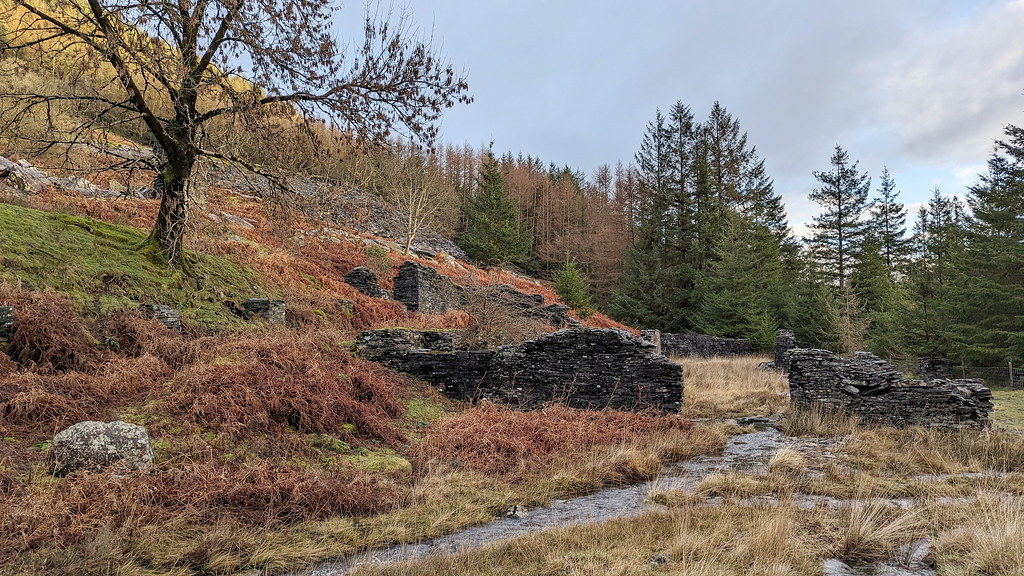
The Chimney stack for the former steam engine:
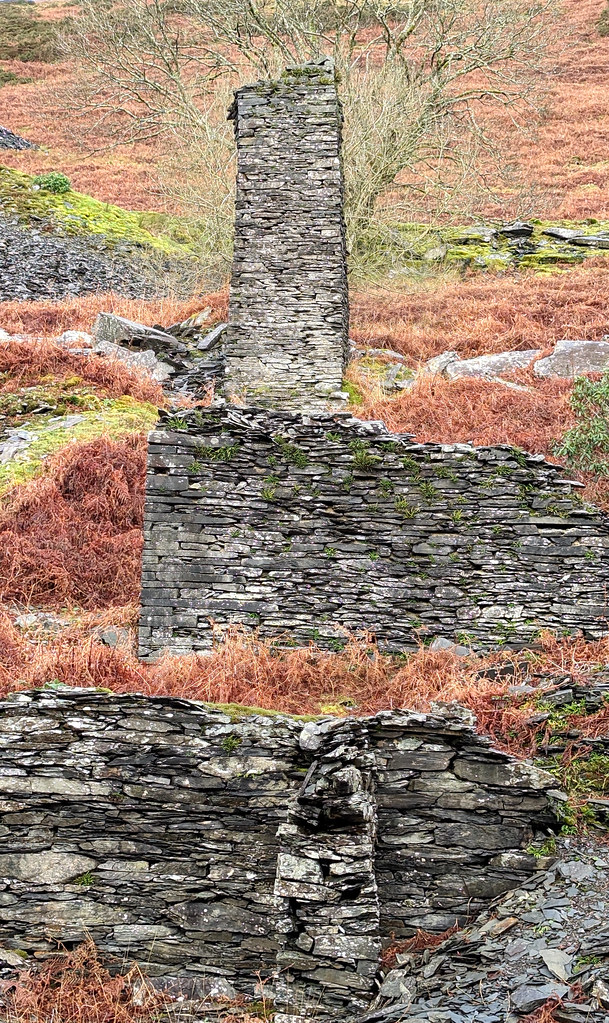
Some lovely stone-work there:
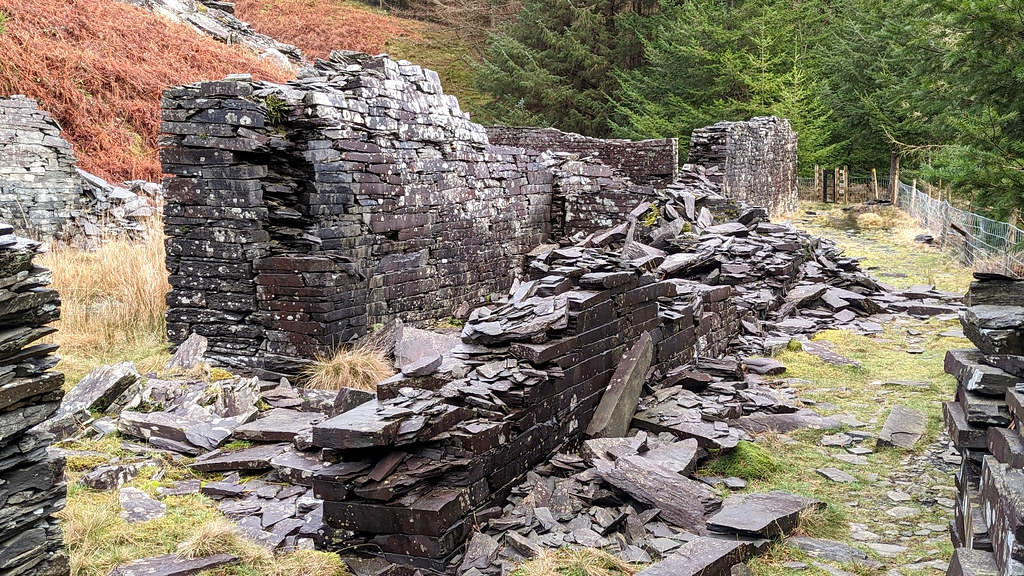

Very photogenic at this time of year:

Incline up to the upper pit:

Onward to the haulage tunnel:

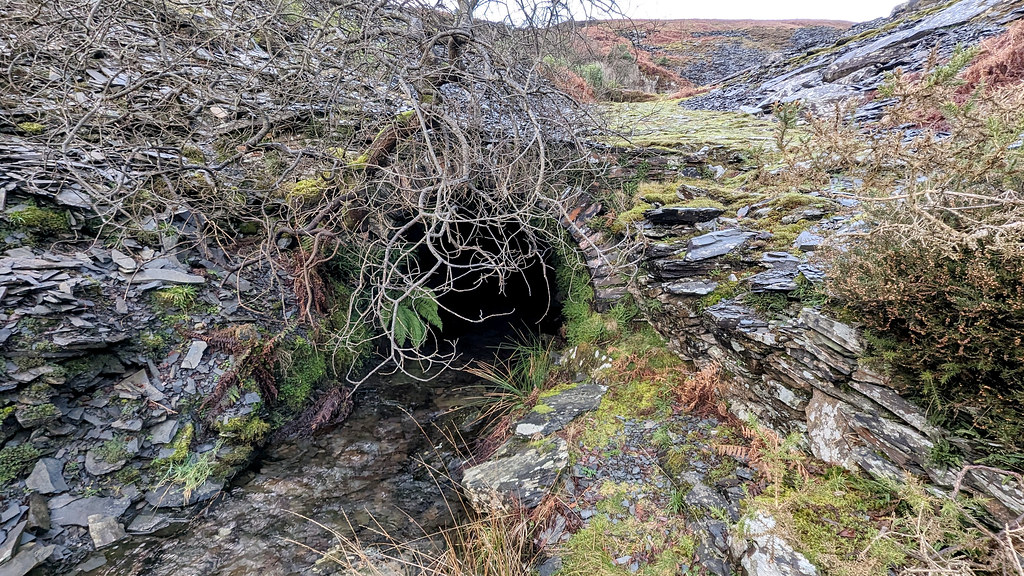
It’s VERY photogenic:



And on to the main adit entrance:
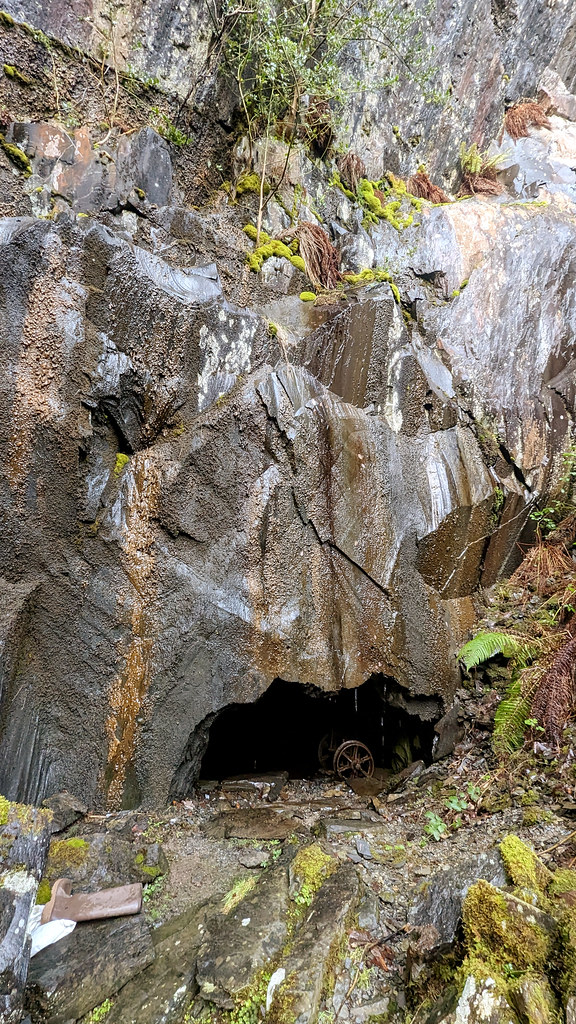
Back out again:


Another photo opportunity:


And the rather wet adit!

And back out we go:

Bye for now Minllyn!

Minllyn slate quarry is situated above Dinas Mawddwy on the western slopes of the Dyfi valley. It first appears on O/S maps in 1832. Its slate processing mill was built circa 1845. In 1856, Edmund Buckley invested in Minllyn, but his slate quarry business was declared bankrupt in 1871. The Carlyle Slate and Slab Company then took over the mine a year later in 1872, and with increased investment, output improved with 60 men in the company’s employ. By 1882, this had increased to 108 men, who produced 2,830 tons of slate. After it had been processed, the finished slate was transported by a short tramway to Dinas Mawddwy station, at the end of the Mawddwy Railway. This in turn joined the 'Cambrian Coast' main line near Cemaes Road. By 1894 the workforce had dropped to 20 with 550 tons of slate being produced. The quarry-mine then remained in production up until 1925.
O/S Map detail from 1900:

A significant number of workings at Minllyn are underground, dating back to the mid-19th century. The size of the tips indicates the success of the various adits. their relative success. Letterly, the underground workings were expanded into open deep pits. The aforementioned processing mill was constructed immediately downhill from the pits, powered by a steam engine. The boiler house and chimney stack survive, as does the water pipe that brought water down from a nearby reservoir. Other surviving features of significance include a stone-lined tramway tunnel used for bringing slate out from the lower pit.
2. The Visit
The hike up to Minllyn is not to be underestimated. It was a lovely, cold but crisp January morn with the low cloud draped over the valley. It’s footpath up for most of the way but it’s pretty steep. It’s well worth the effort, mind. Once up, I soon made my way to the main dressing area with its extensive above ground remains. I soon arrived at the main adit having gone through the stone-lined haulage tunnel. After putting my waders on, I then proceeded to go into the adit. However, it became quickly apparent that due to the very recent heavy rainfall, the adit had water that went above my waders. Pictures show an old mine cart in the main adit and as you can see from the picture below, this wasn’t even visible. Hence rather than getting waders full of cold Welsh water, I decided to defer to a drying season in the future and made my way out again. Given the extensive above-ground remains, thought, thought it was still worth to do a report that documents this part of the mine that tends to get overlooked.
3. The Pictures
The beautiful walk up:


An old water pipe:

Descending down to Minllyn:
The lower pit:

Sneak through to the lower pit rim:

Looking down:

And across:

Nice overview of Minllyn as a whole:


The Chimney stack for the former steam engine:

Some lovely stone-work there:


Very photogenic at this time of year:

Incline up to the upper pit:

Onward to the haulage tunnel:


It’s VERY photogenic:



And on to the main adit entrance:

Back out again:


Another photo opportunity:


And the rather wet adit!

And back out we go:

Bye for now Minllyn!




